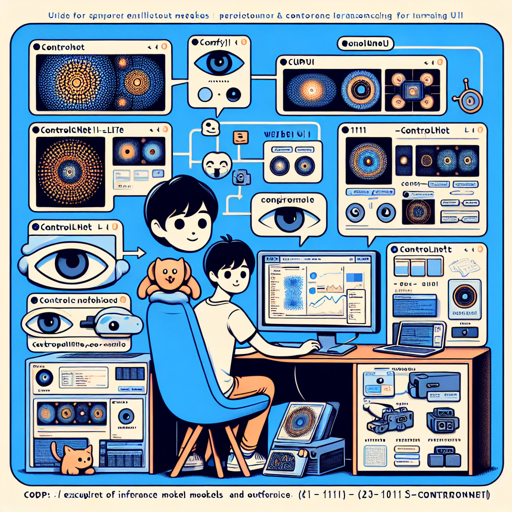In this guide, we will explore how to utilize the pre-trained models and output samples of ControlNet-LLLite. This highly experimental framework allows for various inference methods such as ComfyUI and 1111s Web UI.
Getting Started with ControlNet-LLLite
ControlNet-LLLite is designed to assist in image transformation and enhancement leveraging deep learning principles. Here’s how to get started:
Installation Instructions
- For ComfyUI, visit the repository: ControlNet-LLLite-ComfyUI.
- For the 1111s Web UI, check out: sd-webui-controlnet.
- Ensure you’ve properly set up the necessary libraries as mentioned in the respective GitHub repositories.
Understanding the Model Naming
Model names in ControlNet-LLLite follow a specific structure which provides essential insights about their configurations:
- controllllite_v01032064e_sdxl_blur_500-1000.safetensors:
- v01: Version Flag.
- 032: Conditioning dimensions.
- 064: Control module dimensions.
- sdxl: Base Model.
- blur: Control method.
- 500-1000: (Optional) Timesteps for training.
Training Models
Some notable models available include:
- Base SDXL model trained with Gaussian blur and canny preprocessing.
- Anime models specifically tailored with various preprocessing methods such as Gaussian blur and canny.
Analogies to Understand Model Capabilities
Think of the ControlNet-LLLite models like different chefs specializing in distinct cuisines:
- One chef (model) is highly skilled in using blur techniques (Gaussian blur) to create softened images, much like a chef uses gentle cooking techniques to meld flavors.
- Another chef excels at the “canny” method, akin to a chef who adds sharp, bold flavors to the dish, enhancing its characteristics.
- Just as chefs control the cooking time (timesteps) to achieve the perfect consistency, these models can fine-tune their output based on the training phases (500-1000 timesteps).
Sample Outputs
Once you set up the model and run inference, you’ll receive samples showcasing the elegance of each model’s output:
- For the SDXL base model samples, you can view the output images directly in your interface.
- Explore specific anime model outputs, each demonstrating unique preprocessing results like Gaussian blur and depth mapping.
Troubleshooting Common Issues
While the setup process is generally smooth, you may run into some bumps along the way. Here are some troubleshooting ideas:
- If you’re facing issues loading models, ensure your file paths are correct and all dependencies are installed.
- In case of unexpected output, revisit the preprocessing methods used, ensuring they align with your selected model.
- Check for updates in the repositories to maintain compatibility with any changes in the model structure.
For more insights, updates, or to collaborate on AI development projects, stay connected with fxis.ai.
Final Thoughts
At fxis.ai, we believe that such advancements are crucial for the future of AI, as they enable more comprehensive and effective solutions. Our team is continually exploring new methodologies to push the envelope in artificial intelligence, ensuring that our clients benefit from the latest technological innovations.

